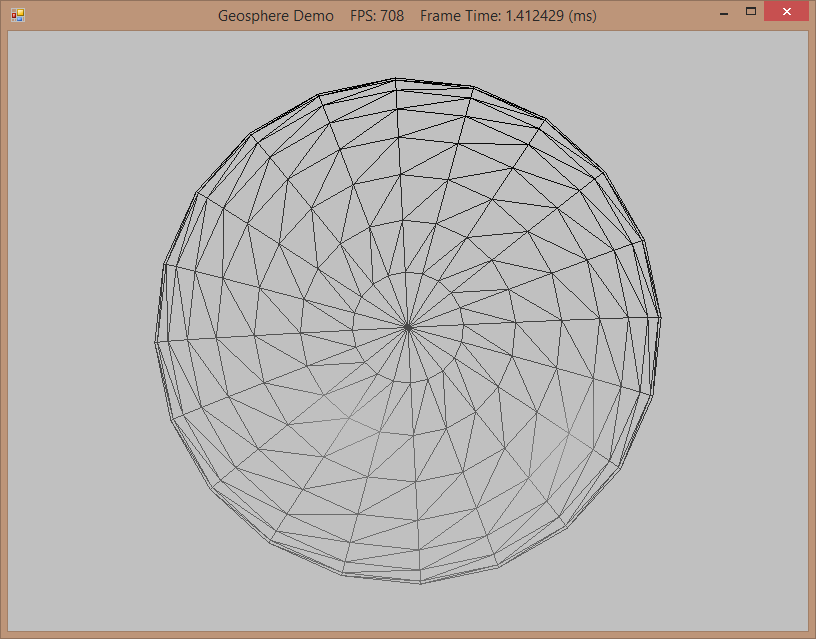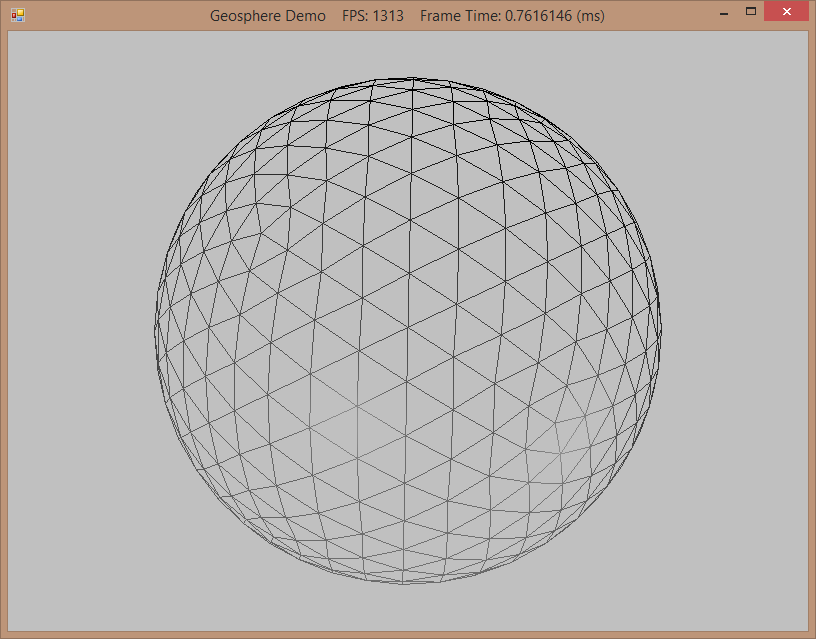A couple of weeks ago as I was browsing HackerNews, I stumbled onto an article about creating spherical procedural maps by Andy Gainey. Procedural terrain/map generation is always something I find interesting, having grown up slightly obsessed with Civilization and its successors. Various methods of tiling a sphere in order to make a game grid have been bouncing around the back of my mind for a while now - unfortunately finding time to explore some of those ideas has been problematic. But, after reading through Mr. Gainey's piece and looking over the source for his demo, I got inspired to take a stab at something similar. My first attempt was to try to directly port his Javascript implementation, which got bogged down in the impedance mismatch between going from JS to C# and WebGL to DirectX at the same time, so I stepped back, and decided to come at the idea again, working in smaller steps.
The first step was to generate a spherical triangle mesh. For this purpose, the spherical mesh that we have previously worked with is not very well suited, as its topology is very inconsistent, particularly around the poles, as you can see in the screenshot below. Instead of this kind of lattitude/longitude subdivision, we will instead use an alternate method, which starts from an icosahedron, then subdivides each face of the icosahedron into four triangles, and finally projects the resulting vertices onto the sphere. This produces a much more regular tessellation, known as a geodesic grid, as you can see in the right screenshot below. This tessellation is not without artifacts - at the vertices of the original icosahedron, the resulting geodesic will have five edges, while all other vertices have six edges, similar to a real-life soccer ball.
Frank Luna's Introduction to 3D Game Programming with Direct3D 11.0, Chapter 6, presented a method of generating of generating a geodesic sphere, which I previously skipped over. The code for this example is based upon his example, with some improvements to eliminate redundant vertices.
The code for this example can be obtained from my GitHub repository.


